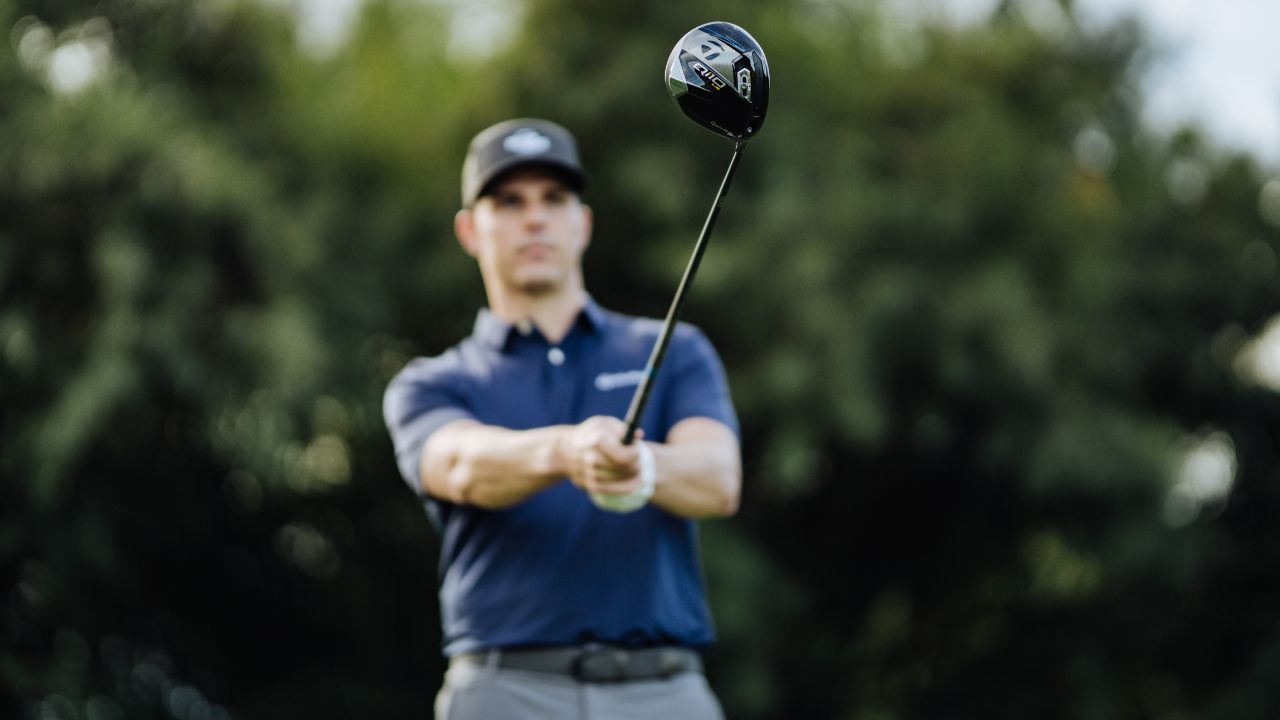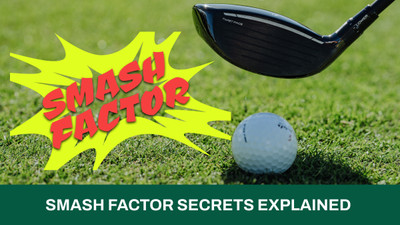Why You Should Care About Smash Factor
Posted by GolfBox on 2nd Oct 2024
Ever experienced that elusive feeling where the golf ball streams off the club face so fast and hot you’re convinced the pros couldn’t have hit it any better?
That is what you call maximising your Smash Factor!
Did you know that measuring and understanding Smash Factor can make you a better golfer? Read on to find out more…
What is Smash Factor?
Smash Factor is a measurement of how efficiently a golfer converts club head speed into ball speed. Also known as Efficiency or Efficiency Rating, Smash Factor is measured with a launch monitor.
Calculating Smash Factor is a straightforward ratio equation: ball speed is divided by club head speed.
For example, a golfer with a driver club head speed of 100mph and a ball speed of 135mph will achieve a Smash Factor of 1.35.
Meanwhile, a golfer with the same 100mph driver club head speed and a 140mph ball speed will attain a Smash Factor of 1.40.
How can the same club head speed generate different ball speeds? The answer lies in a golfer’s swing efficiency, which is what a Smash Factor number reveals.
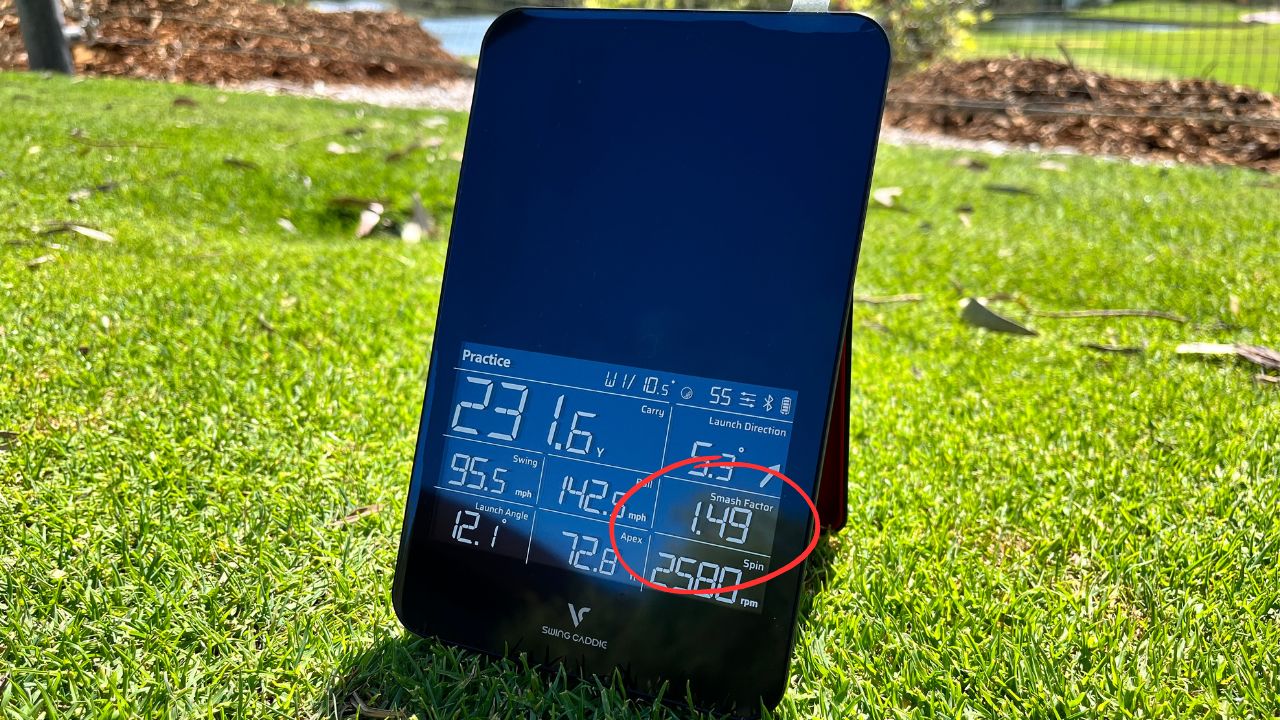
What is an ideal Smash Factor?
Smash Factor varies depending on the loft of the club but is most valuable in assessing the performance of longer clubs, such as the driver.
A Smash Factor of 1.50 with a driver is the gold standard. Tour pros and elite amateurs will average a 1.50 Smash Factor with the driver. Rory McIlroy’s average Smash Factor was recorded at 1.507 during driver testing in 2022; his best effort was a phenomenal 1.537.
In comparison, a 14-handicapper’s average Smash Factor with the driver is about 1.43.
As loft increases, Smash Factor diminishes. Wedges, the most lofted clubs in the bag, typically generate a Smash Factor of around 1.23.
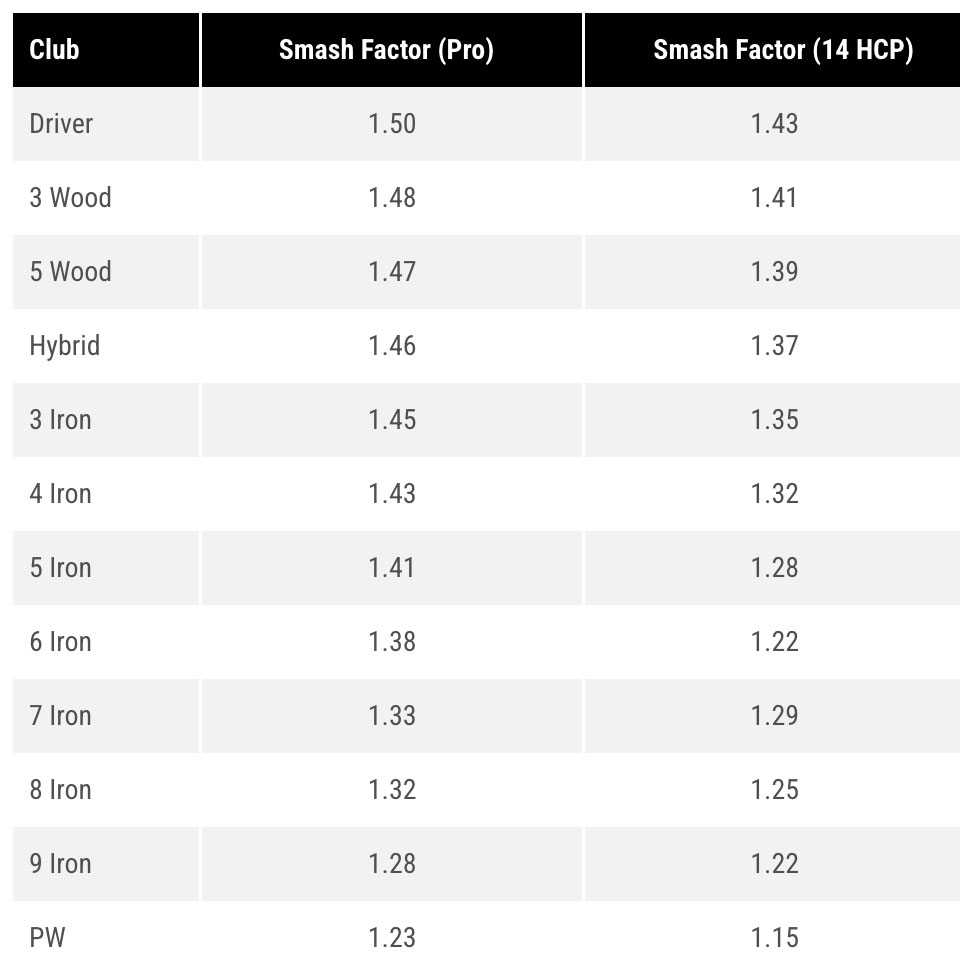
Want to hit the ball further?
Most golfers accept that a higher club head speed should generate faster ball speeds and greater distances.
But improving your Smash Factor can be just as effective in creating extra ball speed and distance from your swing.
Better yet, if you can improve your club head speed and Smash Factor at the same time then you probably have a chance at making it on tour!
However, there’s a catch….
Only elite golfers seem to be able to maintain an efficient Smash Factor and an extremely high swing speed. The average golfer often sees their Smash Factor slide and their accuracy decline when they actively work on increasing the speed of their golf swing. It’s certainly true a fast swing isn’t always an efficient swing!
It’s much easier to create easy distance with an efficient golf swing. Improving your Smash Factor will increase your ball-striking prowess and boost your distance, without impacting your accuracy and dispersion.
How can you improve Smash Factor?
Hitting it out of the sweet spot of the club face is the best way to improve Smash Factor!
The centre of the club face is always where the most efficient transfer of energy from the club to the ball will occur.
You would’ve felt the difference in Smash Factor between a strike out of the screws and a mishit. A pure strike streams off the face and feels flawless; a mishit buzzes the hands, comes out slow and always falls short.
Even the cheapest launch monitors are able to calculate Smash Factor. But if you want to improve your Smash Factor only the premium launch monitors (like the Foresight GC Quad used at GolfBox Custom) are able to pinpoint exactly where a ball strikes the club face.
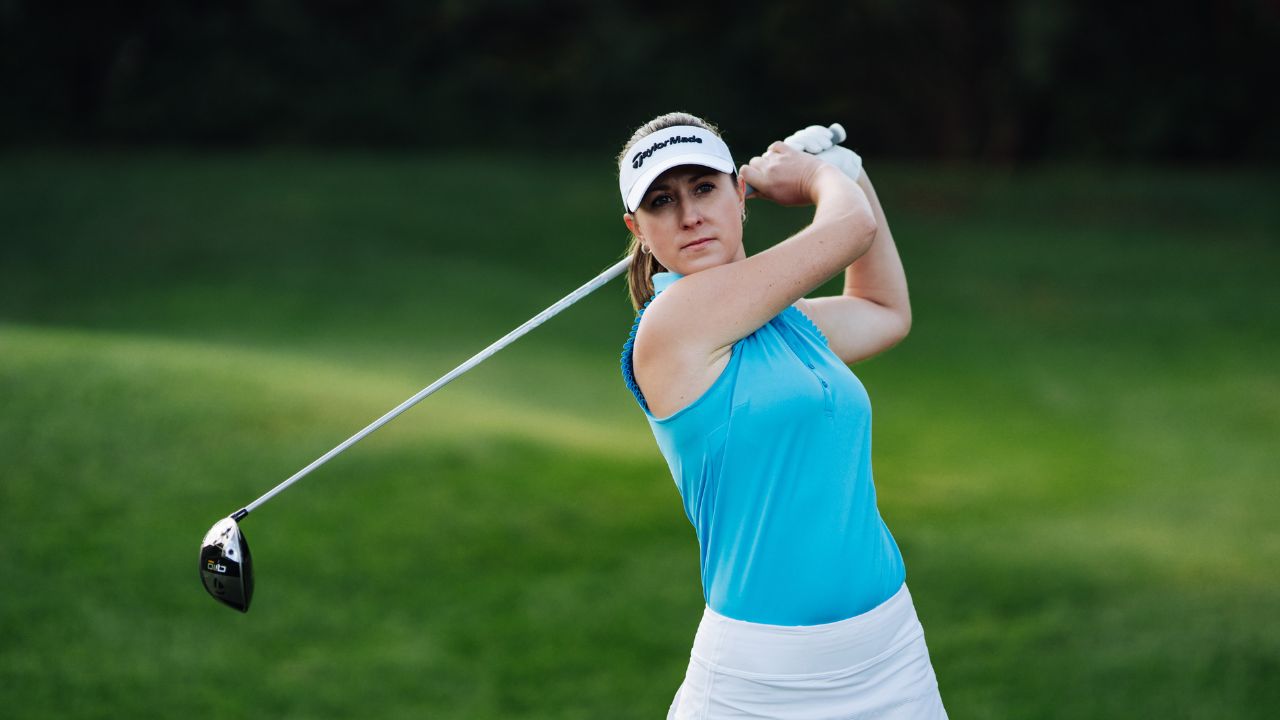
Smash Factor and distance
Smash Factor is great name but can be a little misleading when viewed in isolation.
Smash Factor offers insight into the quality of strike but if you want to hit the ball further, it should be assessed in conjunction with clubhead speed.
A golfer with a high club head speed, high ball speed and high Smash Factor will hit the ball a long way.
A player with a slower swing speed and slower ball speed could match the Smash Factor of a golfer with the higher swing speed. But the truth is, they won’t hit the ball anywhere near as far.
A scenario you don’t want as a golfer is high club head speed and low ball speed. That’s a recipe for a low Smash Factor and shots that don’t fly as far as they could.
Improving Smash Factor with better technique
If your data suggests you’re consistently hitting it out of the toe or heel areas of the face, it might be time to call for help.
Working with a coach will help you deliver the club more consistently and efficiently to the centre of the face, improving your Smash Factor no end.
Sometimes it’s as simple as tweaking your setup but rerouting your swing path is almost always the answer to hitting the sweet spot of the face more often and improving the overall efficiency of a golf swing.
Achieving a correct swing path correct can also limit the impact of an open or closed face at impact — a scenario that will also negatively impact Smash Factor.
The “gear effect” resulting from an open or closed club face imparts side spin on the ball, resulting in a glancing blow and an inefficient transfer of energy from club head to ball.
The same applies for the angle of attack of a golf swing; players that get too steep with the driver often produce excessive spin rates that impact energy transfer.
Improving Smash Factor with better equipment
Club fitters take a particular interest in Smash Factor, but it’s just one of the measurements they consider when identifying the most beneficial club setup for a player’s unique swing attributes.
Customising shaft length, shaft flex, lie angle and loft to a player’s swing will improve Smash Factor by balancing the club in harmony with a golf swing to promote centred contact on the face.
Smash Factor takes on its greatest importance in a driver fitting. Strikes out of the sweet spot indicate how effectively the player is converting club head speed to ball speed and distance.
But just as important for a club fitter is measuring the Smash Factor of strikes that occur outside the sweet spot; mishits will travel straighter and longer if the Smash Factor remains high.
The importance of Smash Factor diminishes as the loft of clubs increases.
Fitters often look at other aspects of performance when fitting irons. Launch angle, spin, apex height, landing angle, dispersion and consistency generally take precedence over Smash Factor. But fitters will glance at Smash Factor to confirm what they already know: that the golfer is finding the middle of the face consistently.
